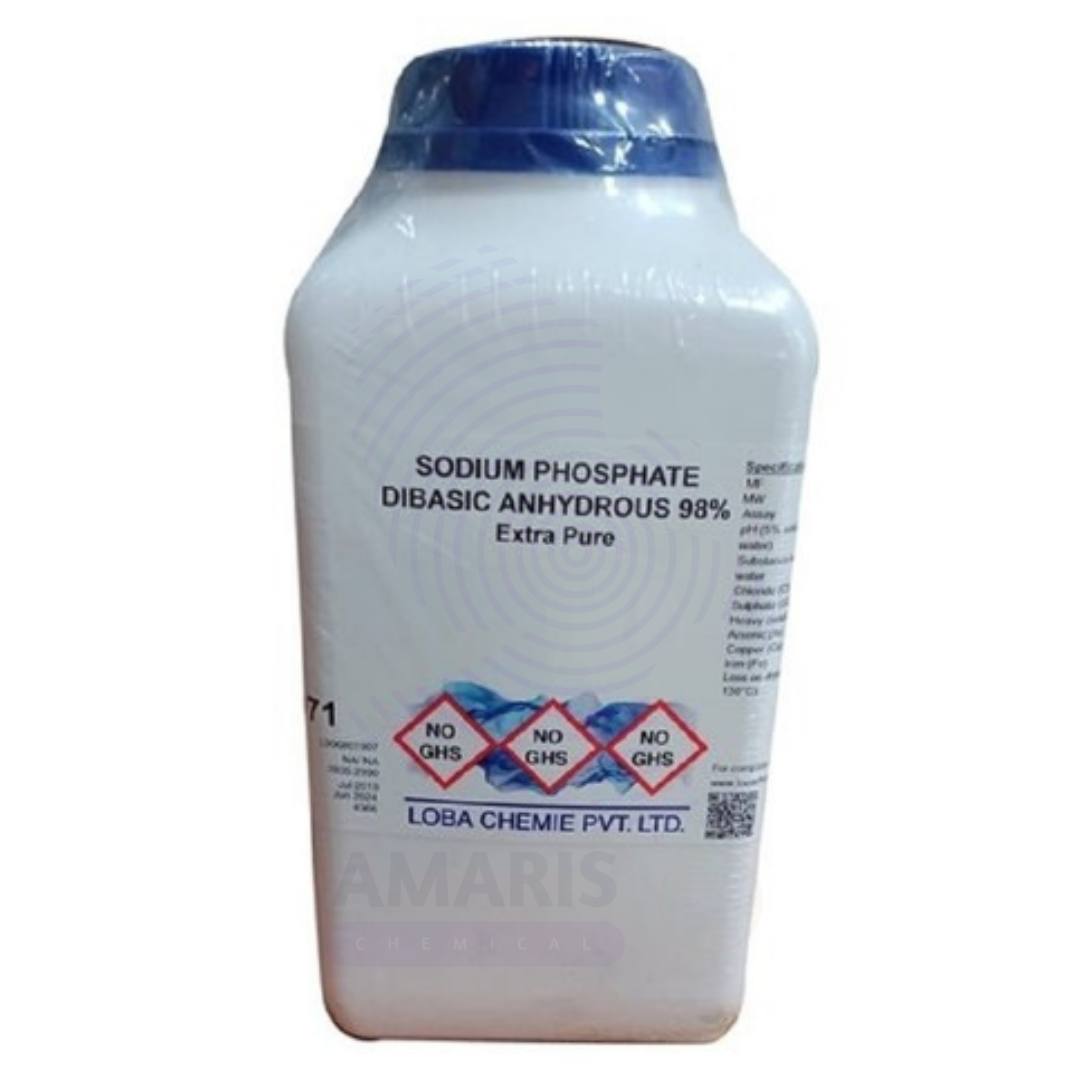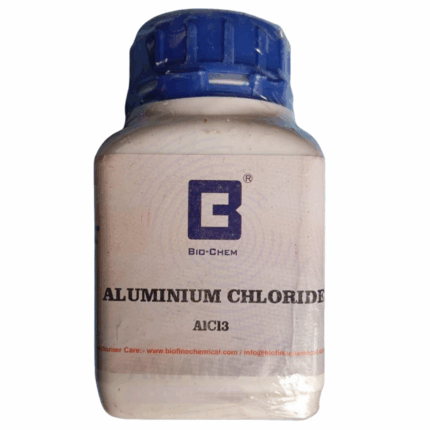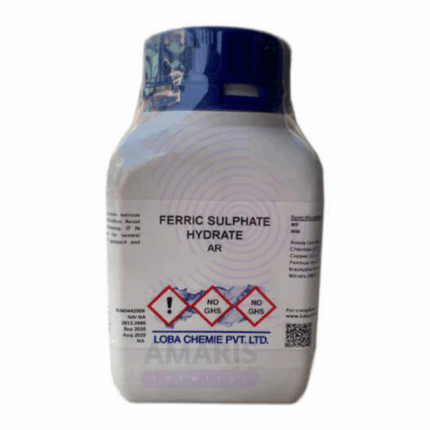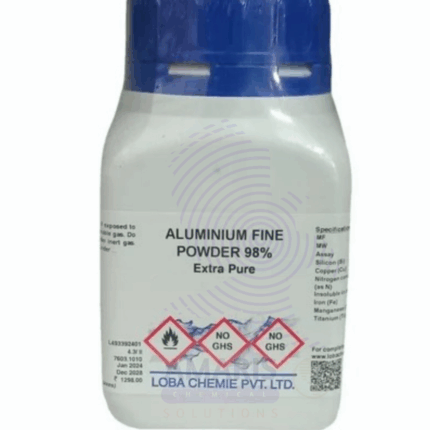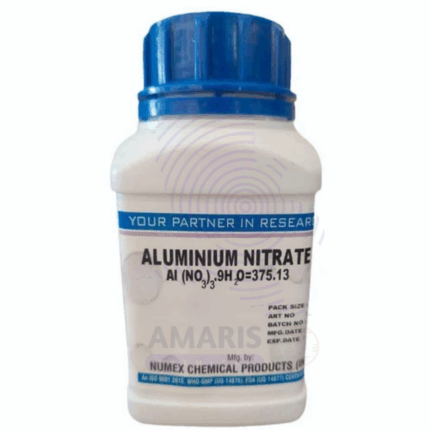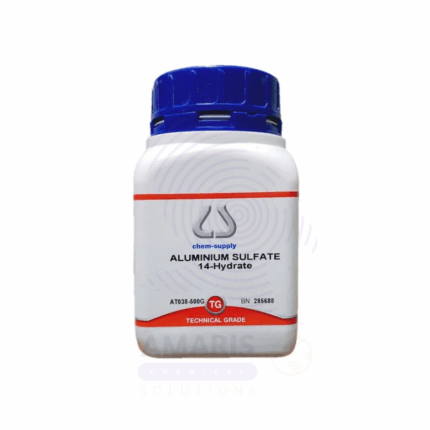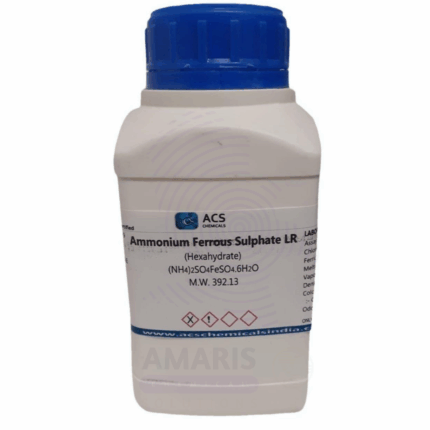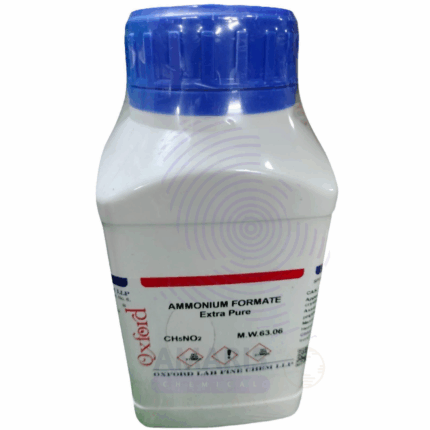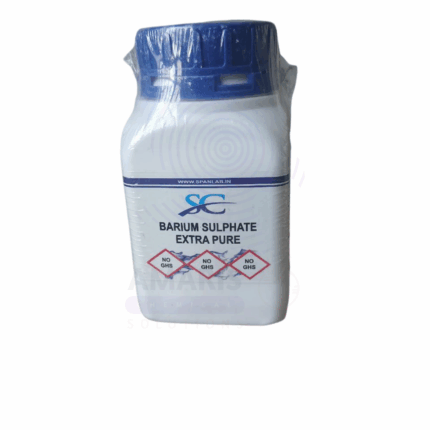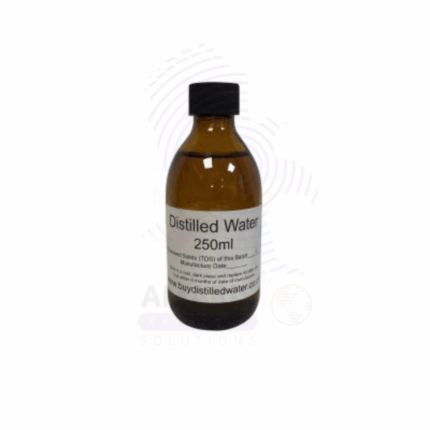
Distilled Water Extra Pure
$ 6.70 Original price was: $ 6.70.$ 6.59Current price is: $ 6.59.
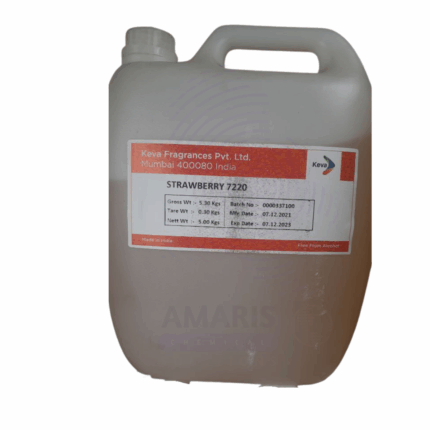
Strawberry Fragrance Oil
$ 23.00 Original price was: $ 23.00.$ 22.44Current price is: $ 22.44.
Disodium Phosphate Extra Pure
$ 17.20
Whatsapp Order
Disodium Phosphate Extra Pure is a high-grade inorganic compound commonly used in laboratories as a buffering agent, emulsifier, and reagent. It is particularly valuable in preparing phosphate buffer solutions for biochemical and molecular biology applications. Its reliable pH-stabilizing properties make it ideal for use in analytical chemistry, food analysis, and preparation of reagent mixtures. With excellent solubility in water and minimal impurities, this extra pure form ensures accuracy and consistency in experimental results across a wide range of laboratory procedures.
Description
Table of Contents
Toggle
Disodium Phosphate Extra Pure
Primary Uses
- Buffer preparation (especially phosphate buffer systems):
A key component in creating stable buffer solutions for biochemical and analytical experiments. - Reagent in analytical chemistry:
Used in colorimetric analysis and other quantitative assays due to its buffering and ionic properties. - pH control in laboratory solutions:
Helps maintain neutral to slightly basic conditions during reactions or solution storage. - Component of PBS (phosphate-buffered saline):
Widely used in biological and molecular experiments to mimic physiological conditions. - Nutrient in microbiological media:
Supplies phosphate ions essential for microbial growth in culture formulations.
Secondary Uses
- Educational use in buffer and acid-base experiments:
Ideal for demonstrating buffer action in teaching labs. - Electrophoresis buffer component:
Occasionally used in gel electrophoresis to maintain consistent pH. - Water softening simulations and studies:
Studied for its ability to chelate calcium and magnesium in lab-scale water treatment experiments. - Stabilizing agent in enzyme reactions:
Used to maintain optimal ionic strength and pH in enzymatic assays.
Additional information
| PACK SIZE |
500 grams Plastic Tin |
|---|
KEY PRODUCT FEATURES
1. Basic Identification Attributes
- Chemical Name: Disodium Phosphate
- Other Names: Sodium phosphate dibasic, Disodium hydrogen phosphate
- Chemical Formula: Na₂HPO₄
- CAS Number:
- Anhydrous: 7558-79-4
- Dihydrate: 10028-24-7
- Heptahydrate: 7782-85-6
- Grade: Extra Pure (Laboratory Grade)
- Molecular Weight:
- 141.96 g/mol (anhydrous)
- 177.99 g/mol (dihydrate)
- Appearance: White crystalline powder or granules
- Odor: Odorless
2. Physical & Chemical Properties
- Solubility: Soluble in water
- pH (1% solution): ~8.5 – 9.5
- Melting Point: ~250 °C (decomposes)
- Density: ~1.7 – 2.0 g/cm³ (varies with hydration)
- Hygroscopic: Yes, especially in hydrated forms
3. Safety & Hazard Attributes
- GHS Classification: Not classified as hazardous
- Hazard Statements: None applicable
- PPE Requirements:
- Safety goggles
- Lab coat
- Nitrile or latex gloves
- First Aid Measures:
- Inhalation: Move to fresh air
- Skin Contact: Wash with soap and water
- Eye Contact: Rinse with clean water for several minutes
- Ingestion: Rinse mouth; seek medical attention if needed
4. Storage & Handling Attributes
- Storage Conditions:
- Keep tightly closed in a cool, dry place
- Avoid exposure to moisture
- Store away from incompatible substances (e.g., strong acids)
- Handling Notes:
- Avoid creating dust
- Use in well-ventilated areas
- Wash hands after handling
5. Regulatory & Compliance Attributes
- EC Number: 231-448-7
- UN Number: Not regulated
- Hazard Class: Non-hazardous for transport
- REACH Status: Registered
6. Laboratory Applications
- Primary Uses:
- Buffering agent in chemical and biochemical laboratories
- Component in phosphate-buffered saline (PBS)
- Analytical reagent
- pH regulation in lab experiments
- Other Uses:
- Model compound for phosphate equilibrium studies
- Used in protein precipitation and purification systems
SAFETY HANDLING PRECAUTIONS
SAFETY PRECAUTIONS
- Personal Protective Equipment (PPE):
- Safety goggles
- Lab coat
- Gloves
- Storage:
- Store in a cool, dry, well-ventilated area
- Keep container tightly closed
- Protect from moisture and incompatible substances (e.g., strong acids)
- Handling Tips:
- Minimize dust generation
- Avoid breathing dust or mist
- Wash thoroughly after handling
FIRST AID MEASURES
- Inhalation: Move to fresh air. Seek medical attention if symptoms persist
- Skin Contact: Wash off with soap and water
- Eye Contact: Rinse cautiously with water for several minutes
- Ingestion: Rinse mouth. Do not induce vomiting unless instructed by medical personnel
FIRE & REACTIVITY INFORMATION
- Flammability: Not flammable
- Hazardous Decomposition: Sodium oxides, phosphorous oxides
- Incompatible With: Strong acids, moisture (hygroscopic)
Related products
Aluminium Chloride Anhydrous Extra Pure
Aluminium Chloride Anhydrous Extra Pure is a high-purity, white to yellowish crystalline compound that is highly hygroscopic and fuming in moist air. It is extensively used in laboratory chemistry as a powerful Lewis acid catalyst, particularly in Friedel-Crafts alkylation and acylation reactions, as well as in the synthesis of organometallic compounds. Its anhydrous form ensures optimal reactivity and effectiveness in moisture-sensitive processes, including polymerization and halogenation studies. Due to its corrosive nature and tendency to react violently with water, it must be handled in a dry, controlled environment using proper safety measures. This extra pure grade is ideal for high-precision analytical and preparative procedures in organic and inorganic chemistry research.
Aluminium Ferric Sulphate Extra Pure
Aluminium Ferric Sulphate Extra Pure is a high-purity, yellowish to light brown crystalline solid composed of aluminum, iron, and sulfate ions, commonly used in laboratory settings for analytical, coordination, and inorganic chemistry research. Its dual-metal composition makes it valuable for studying metal ion interactions, flocculation processes, and as a reagent in qualitative analysis of phosphates and tannins. The compound also finds application in preparing standard solutions and in experiments related to coagulation and sedimentation. Its extra pure grade ensures consistent performance with minimal contamination, making it ideal for precise, controlled experimentation. It should be stored in tightly sealed containers in a dry, cool environment to maintain stability and prevent moisture uptake.
Aluminium Metal Fine Extra Pure
Aluminium Metal Fine Extra Pure is a high-purity, silvery-grey powder composed of finely divided aluminum particles, ideal for precision laboratory work and specialized chemical reactions. Known for its high surface area and excellent reactivity, it is widely used in thermite reactions, metallurgical experiments, and the synthesis of aluminum-based compounds. Its fine particle size enhances its role as a reducing agent in organic and inorganic chemistry, as well as in combustion and pyrotechnic research. The extra pure grade ensures minimal trace impurities, supporting consistent and accurate results in sensitive analytical and preparative procedures. Due to its flammability and potential for dust explosions, it must be handled with caution in well-ventilated areas and stored in sealed, moisture-free containers.
Aluminium Nitrate Extra Pure
Aluminium Nitrate Extra Pure is a high-purity, white crystalline compound that is highly soluble in water and widely used in laboratory chemistry for analytical, synthesis, and research purposes. It serves as a reliable source of aluminum ions in solution, making it valuable in qualitative analysis, coordination chemistry, and materials science studies. This compound is often utilized in the preparation of other aluminum salts, as a nitrating agent, and in controlled oxidation reactions. Its extra pure grade guarantees minimal interference from contaminants, ensuring accurate, reproducible results in sensitive experimental work. Aluminium Nitrate should be stored in tightly sealed containers, away from moisture and incompatible substances, due to its oxidizing nature and hygroscopicity.
Aluminium Sulphate Hydrous Extra Pure
Aluminium Sulphate Hydrous Extra Pure is a high-purity, white to slightly off-white crystalline compound containing bound water molecules, commonly used in laboratory settings for analytical, inorganic, and coordination chemistry. It serves as a reliable source of aluminum ions in aqueous solutions and is frequently employed in precipitation reactions, dye fixation studies, and flocculation experiments. The hydrous form offers improved solubility and ease of handling, making it suitable for educational labs and controlled research environments. Its extra pure grade ensures minimal interference from impurities, enabling accurate, reproducible results in sensitive analytical procedures. To maintain its stability and prevent further hydration or contamination, it should be stored in well-sealed containers in a cool, dry place.
Ammonium Ferrous Sulphate Extra Pure
Ammonium Ferrous Sulphate Extra Pure, also known as Mohr’s salt, is a high-purity, light green crystalline compound composed of ferrous sulfate and ammonium sulfate. It is widely used in laboratory settings as a stable source of ferrous ions for redox titrations, particularly in permanganometric and dichromate analyses. Its stability in air, compared to other iron(II) salts, makes it ideal for preparing standard solutions and studying oxidation-reduction reactions. This compound is also valuable in coordination chemistry and iron metabolism research. The extra pure grade ensures minimal contamination, supporting precise analytical and experimental results. It should be stored in tightly sealed containers in a cool, dry place to prevent oxidation and maintain its integrity.
Ammonium Formate Extra Pure
Ammonium Formate Extra Pure is a high-purity, white crystalline compound commonly used in laboratory chemistry as a buffering agent, reducing agent, and reagent in organic synthesis. It plays a significant role in catalytic hydrogenation reactions, particularly in transfer hydrogenation using palladium or platinum catalysts. In analytical chemistry, it is frequently used in HPLC and mass spectrometry applications due to its volatility and compatibility with aqueous and organic mobile phases. The extra pure grade ensures extremely low levels of impurities, making it suitable for high-precision and instrument-sensitive applications. It should be stored in a cool, dry, and tightly sealed container to preserve its stability and prevent moisture uptake.
Barium Sulphate Extra pure
Barium Sulphate Extra Pure is a high-purity, white, odorless crystalline powder known for its extreme insolubility in water and chemical inertness, making it highly useful in laboratory settings for qualitative analysis and gravimetric determinations. It is commonly employed in the detection and quantification of sulfate ions through precipitation reactions, as well as in studies involving solubility equilibria and surface chemistry. Its high density and stability also make it valuable in preparing calibration standards and radiopaque materials in research. The extra pure grade ensures minimal contamination, providing consistent and reliable results in sensitive analytical procedures. It should be stored in a dry, tightly sealed container to maintain its quality and prevent contamination.


 Preservatives(food)
Preservatives(food) Flavor Enhancers
Flavor Enhancers Acidulants
Acidulants Sweeteners
Sweeteners Antioxidants
Antioxidants Colorants(food)
Colorants(food) Nutraceutical Ingredients (food)
Nutraceutical Ingredients (food) Nutrient Supplements
Nutrient Supplements Emulsifiers
Emulsifiers
 Collectors
Collectors Dust Suppressants
Dust Suppressants Explosives and Blasting Agents
Explosives and Blasting Agents Flocculants and Coagulants
Flocculants and Coagulants Frothers
Frothers Leaching Agents
Leaching Agents pH Modifiers
pH Modifiers Precious Metal Extraction Agents
Precious Metal Extraction Agents
 Antioxidants(plastic)
Antioxidants(plastic) Colorants (Pigments, Dyes)
Colorants (Pigments, Dyes) Fillers and Reinforcements
Fillers and Reinforcements Flame Retardants
Flame Retardants Monomers
Monomers Plasticizers
Plasticizers Polymerization Initiators
Polymerization Initiators Stabilizers (UV, Heat)
Stabilizers (UV, Heat)
 Antifoaming Agents
Antifoaming Agents Chelating Agents
Chelating Agents Coagulants and Flocculants
Coagulants and Flocculants Corrosion Inhibitors
Corrosion Inhibitors Disinfectants and Biocides
Disinfectants and Biocides Oxidizing Agents
Oxidizing Agents pH Adjusters
pH Adjusters Scale Inhibitors( water)
Scale Inhibitors( water)
 Antioxidants(cosmetic)
Antioxidants(cosmetic) Emollients
Emollients Fragrances and Essential Oils
Fragrances and Essential Oils Humectants
Humectants Preservatives
Preservatives Surfactants(cosmetic)
Surfactants(cosmetic) Thickeners
Thickeners UV Filters
UV Filters
 Fertilizers
Fertilizers Soil Conditioners
Soil Conditioners Plant Growth Regulators
Plant Growth Regulators Animal Feed Additives
Animal Feed Additives Biostimulants
Biostimulants Pesticides (Herbicides, Insecticides, Fungicides)
Pesticides (Herbicides, Insecticides, Fungicides)
 Active Pharmaceutical Ingredients (APIs)
Active Pharmaceutical Ingredients (APIs) Excipients
Excipients Solvents(pharmaceutical)
Solvents(pharmaceutical) Antibiotics
Antibiotics Antiseptics and Disinfectants
Antiseptics and Disinfectants Vaccine Adjuvants
Vaccine Adjuvants Nutraceutical Ingredients (pharmaceutical)
Nutraceutical Ingredients (pharmaceutical) Analgesics & Antipyretics
Analgesics & Antipyretics
 Analytical Reagents
Analytical Reagents Solvents(lab)
Solvents(lab) Chromatography Chemicals
Chromatography Chemicals Spectroscopy Reagents
Spectroscopy Reagents microbiology-and-cell-culture-reagents
microbiology-and-cell-culture-reagents Molecular Biology Reagents
Molecular Biology Reagents Biochemical Reagents
Biochemical Reagents Inorganic and Organic Standards
Inorganic and Organic Standards Laboratory Safety Chemicals
Laboratory Safety Chemicals Specialty Laboratory Chemicals(Special Laboratory Equipment)
Specialty Laboratory Chemicals(Special Laboratory Equipment)
 Demulsifiers
Demulsifiers Hydraulic Fracturing Fluids
Hydraulic Fracturing Fluids Scale Inhibitors(oil)
Scale Inhibitors(oil) Surfactants(oil)
Surfactants(oil) Drilling Fluids
Drilling Fluids
 Dyes and Pigments
Dyes and Pigments Bleaching Agents
Bleaching Agents Softening Agents
Softening Agents Finishing Agents
Finishing Agents Antistatic Agents
Antistatic Agents
 Admixtures
Admixtures Waterproofing Agents
Waterproofing Agents Sealants and Adhesives
Sealants and Adhesives Curing Compounds
Curing Compounds Concrete Repair Chemicals
Concrete Repair Chemicals Anti-Corrosion Coatings
Anti-Corrosion Coatings
 Surfactants(cleaning)
Surfactants(cleaning) Builders
Builders Enzymes
Enzymes Solvents (Cleaning)
Solvents (Cleaning) Fragrances
Fragrances
 Electronic Chemicals
Electronic Chemicals Catalysts
Catalysts Lubricants
Lubricants Photographic Chemicals
Photographic Chemicals Refrigerants
Refrigerants Automotive chemicals
Automotive chemicals Pyrotechnic Chemicals
Pyrotechnic Chemicals
 Biodegradable Surfactants
Biodegradable Surfactants Bio-based Solvents
Bio-based Solvents Renewable Polymers
Renewable Polymers Carbon Capture Chemicals
Carbon Capture Chemicals Wastewater Treatment Chemicals
Wastewater Treatment Chemicals
 Pigments
Pigments Solvents(paint)
Solvents(paint) Specialty Coatings
Specialty Coatings Binders/Resins
Binders/Resins Additives
Additives Driers
Driers Anti-Corrosion Agents
Anti-Corrosion Agents Functional Coatings
Functional Coatings Application-Specific Coatings
Application-Specific Coatings
 Fresh Herbs
Fresh Herbs Ground Spices
Ground Spices Whole Spices
Whole Spices Spice Blends
Spice Blends Dried Herbs
Dried Herbs
 Leavening Agents
Leavening Agents Dough Conditioners
Dough Conditioners Flour Treatments
Flour Treatments Fat Replacers
Fat Replacers Decoratives
Decoratives Preservatives(baking)
Preservatives(baking)
 Plasticizers & Softeners
Plasticizers & Softeners Reinforcing Agents
Reinforcing Agents Adhesion Promoters
Adhesion Promoters Vulcanizing Agents
Vulcanizing Agents Antidegradants
Antidegradants Blowing Agents
Blowing Agents Fillers & Extenders
Fillers & Extenders Accelerators & Retarders
Accelerators & Retarders